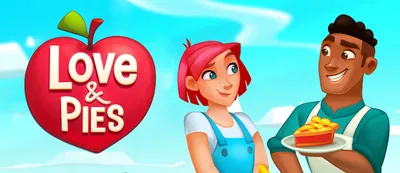
Love and Pies
Game Description
Section titled “Game Description”Live the pie life as top baker in Love & Pies! Uncover juicy secrets in every room as Amelia solves mysteries in her family cafe. In a story full of twists and turns, you’ll meet dramatic exes, nasty rivals, eccentric relatives, adorable pets and friendly customers. Endless drama, love and secrets - a merge mystery!
Technical summary
Section titled “Technical summary”Love and Pies was one of the pioneers in the merge-2 genre, melding a complex story set in a stylised, extensive, and highly customisable map with straightforward gameplay brought to life through vibrant art and animations. Live ops run in parallel, ensuring players have a variety of long-term goals and short term boosts to play for.
Behind the scenes, Love and Pies is highly data-driven, built with a custom CMS integrated into Unity and its addressable system. All live op behaviour, gameplay behaviour, story content, and much more are defined and serialized through the CMS, with drag-and-drop slots for all assets associated with each feature. This removed dependencies between artists and developers, and allowed content designers to autonomously implement hundreds of game-days of story content.
The merge-2 gameplay is powered by the ECS framework Entitas, which allows rapid adjustments and extensions of gameplay mechanics, building complex behaviours while keeping code structure simple.
My contributions
Section titled “My contributions”I was part of the Love and Pies team for six years, from early prototyping and playtesting, via a major pivot in the core game, through global launch, and then into live operations. As a result, it’s a little tricky to summarise all the work I did on Love and Pies!
My time as part of the Love and Pies team was truly a formative experience. I came out of it a far better and more experienced developer than I started, and that was largely due to the fantastic team I worked with. I learned a lot from the more senior developers on the team, and as each of them moved on to other projects or teams, I inherited responsibility for the code they’d contributed and extended, refactored and built upon it.
By the time I left the team, I was the longest-standing team member by quite a wide margin and the creator or maintainer of many systems, including but not limited to:
- runtime asset loading logic
- automated addressable asset group creation and population
- over-the-air content delivery
- cutscene implementation tooling
- map progression logic, upgrade handling, and optimisation
- analytics systems, as well as the external automated analytics validation system
I also was the go-to developer for handling complex merges or untangling git mistakes, and often helped other devs work out new system structure or solve complex bugs. My tenure on the project meant I had a thorough understanding of the overall game architecture and could reliably anticipate many issues.
The final project I completed as part of the Love and Pies team was a full refactor of the map asset management logic, which was by far the biggest project I independently delivered. The result of my work was a 60% reduction in build time, 95% reduction in frequently-run bake processes, and a major improvement in visible lag and overall performance.
I’m currently working through my six years at Trailmix and writing up deep-dives into some of the more interesting problems I tackled; you can find more details here.